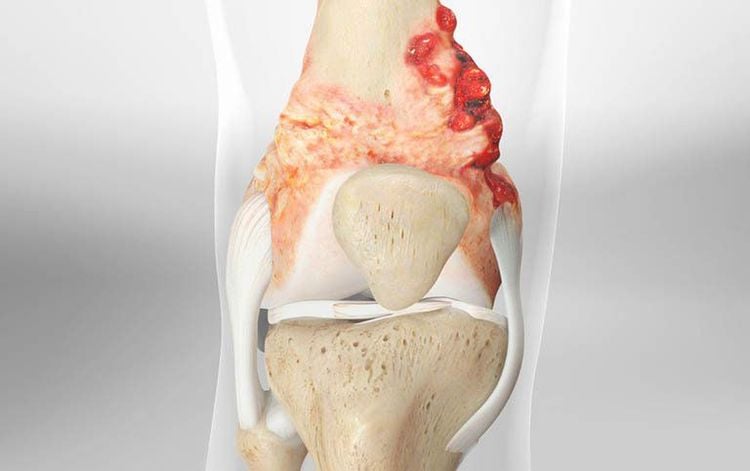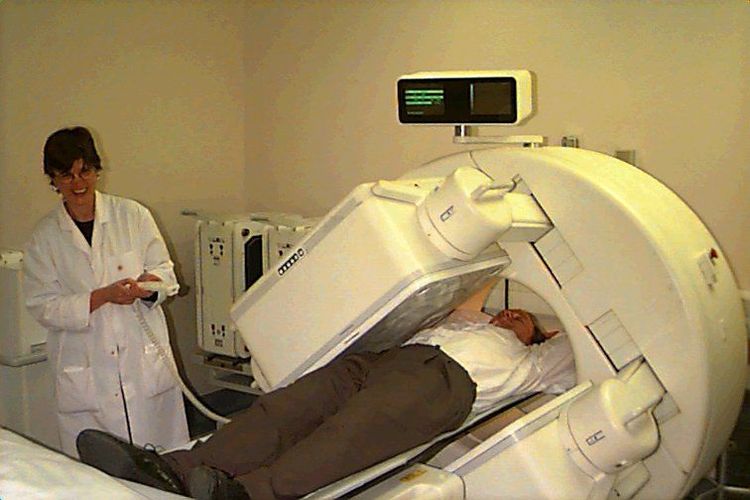This is an automatically translated article.
Osteosarcoma – Osteosarcoma is a bone cancer that accounts for 5% of all childhood cancers. The disease can spread to other parts of the body such as the lungs or other bones, so osteosarcoma is a very dangerous disease that needs to be examined and treated early.1. What is bone sarcoma?
Sarcoma (or osteosarcoma/bone cancer) is a type of bone cancer that occurs in the cells that make bone. These cells instead of new bone create malignancies. Osteosarcoma can develop in any bone in your body. Usually, this osteosarcoma occurs in the bone around the knee joint, or in the femur (lower pole of the femur) or tibia (upper pole of the shin bone). In rare cases, the disease occurs when tumors appear in the soft tissues of the body. Areas of the jaw, ribs or pelvis will have a low rate of melanoma. Osteoarthritis is also very rare on the bones of the fingers and toes. Bone sarcoma is a very dangerous disease because it has the ability to spread to other parts of the body, most often to the lungs or other bones. According to research, bone sarcoma (malignant bone tumor) can be divided into 2 types:
Central tumor (also known as myeloma); Superficial tumor (also known as peripheral tumor). Each of the above tumor types has different subtypes that are determined by observing the tumor cells through a microscope.
2. Causes of bone sarcoma
The cause of osteoblastic bone cancer is determined to be due to the abnormal division of bone-forming cells, leading to the formation of malignant tumors. An abnormal division of bone cells can be caused by a faulty cell's genetic machinery (DNA). At this time, cells grow and divide uncontrollably, causing malignant bone tumors to form. Besides, there are other causes of bone sarcoma such as:
Cancer drugs or cancer treatments such as chemotherapy, radiation also contribute to malignant tumors; The cause of this disease in children may be due to rapid bone growth. Accordingly, if a child's bones are found to grow too quickly compared to normal, there is a high probability of melanoma.

Nguyên nhân gây ra bệnh ung thư xương tạo xương được xác định là do các tế bào tạo xương xảy ra sự phân chia bất thường
3. Signs and symptoms of osteosarcoma
Bone-forming bone cancer is common in young people, especially those who are taller than other children of the same age. The site where the disease often occurs is usually the lower end of the femur or the top of the tibia.Common symptoms of osteosarcoma include:
Pain: This is the most common initial symptom of osteosarcoma. Patients will notice vague, intermittent pain, which then progresses to persistent pain that interferes with daily living, even though pain medication is not relieved. Tumor appearance: Bone tumor will protrude above the skin surface, the border is not clear. If the tumor grows quickly, it will deform the limb of the tumor area. Pathological fractures: Because malignant bone tumors cause bone destruction, fractures occur. If you feel persistent pain, swelling or cracking in the musculoskeletal areas, you need to see a specialist doctor for a timely examination and diagnosis.
4. Diagnosis of bone sarcoma
To diagnose the disease, the first step is to ask the patient about the symptoms of the disease, the difficulties (if any) that appear in the movement of the limbs and the differential diagnosis with the common causes of the disease. pain and swelling of the limbs (such as arthritis, sports injuries,...). In addition, the doctor will look at the surrounding area, fluid in the joint as well as any protrusions.
To make the subclinical diagnosis, the following techniques are required:
Conventional X-ray; Computerized tomography ; Magnetic resonance imaging; Bone scintigraphy with SPECT, SPECT/CT and 99mTc-MDP; Functional kidney scintigraphy with SPECT, SPECT/CT and 99mTc-DTPA machines; Full body PET/CT scan with 18F-FDG; PET/CT scan with 18F-NaF; Blood biochemical tests; Histopathological examination. In case after X-ray, the doctor finds signs of tumor appearing, the patient will be asked to go to major medical centers for treatment of bone sarcoma. There, the patient will undergo magnetic resonance imaging (MRI) of the tumor area to determine the effect of the tumor on blood vessels as well as nerves and nearby joints.

Chụp xạ hình xương chẩn đoán bệnh sarcoma xương
5. Treatment of bone sarcoma
There are 3 methods that will be combined in the treatment of osteoblastic bone cancer, including: chemotherapy, surgery and chemotherapy after surgery. More specifically, the first round of chemotherapy, which will be given before surgery, is aimed at killing as much of the cancer cells as possible. Usually, patients will be indicated for early surgery to remove the cancerous bone without amputation. Next, the doctor will carry out bone grafting or synthetic substances into the area of the lost bone to help the limb function as complete as possible.
Finally, chemotherapy after surgery is the third step in the treatment of osteosarcoma. If the tumor has invaded a vital blood vessel or has become part of a nearby joint, it may be difficult to perform limb-sparing surgery. In these cases, doctors often have to amputate the affected limb.
In short, osteosarcoma - malignant bone tumor is a very dangerous disease. Therefore, when a bone tumor is detected, the patient should be examined for timely treatment before the tumor is increasingly invasive.
Currently, Vinmec International General Hospital has been and continues to be fully equipped with modern diagnostic facilities such as: PET/CT, SPECT/CT, MRI... biology, immunohistochemistry, genetic testing, molecular biology testing, as well as a full range of targeted drugs, the most advanced immunotherapy drugs in cancer treatment. Multimodal cancer treatment from surgery, radiation therapy, chemotherapy, hematopoietic stem cell transplantation, targeted therapy, immunotherapy in cancer treatment, new treatments such as autoimmunotherapy body, heat therapy...
After having an accurate diagnosis of the disease and stage, the patient will be consulted to choose the most appropriate and effective treatment methods. After undergoing the treatment phase, the patient will also be monitored and re-examined to determine whether the cancer treatment is effective or not. Therefore, if you have signs and symptoms of bone sarcoma, you can completely trust and choose Vinmec as the address for examination, diagnosis and treatment.
Please dial HOTLINE for more information or register for an appointment HERE. Download MyVinmec app to make appointments faster and to manage your bookings easily.













